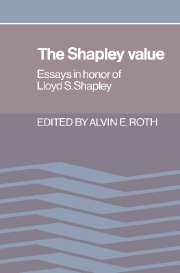Book contents
3 - A method for evaluating the distribution of power in a committee system
Published online by Cambridge University Press: 13 October 2009
Summary
In the following paper we offer a method for the a priori evaluation of the division of power among the various bodies and members of a legislature or committee system. The method is based on a technique of the mathematical theory of games, applied to what are known there as “simple games” and “weighted majority games.” We apply it here to a number of illustrative cases, including the United States Congress, and discuss some of its formal properties.
The designing of the size and type of a legislative body is a process that may continue for many years, with frequent revisions and modifications aimed at reflecting changes in the social structure of the country; we may cite the role of the House of Lords in England as an example. The effect of a revision usually cannot be gauged in advance except in the roughest terms; it can easily happen that the mathematical structure of a voting system conceals a bias in power distribution unsuspected and unintended by the authors of the revision. How, for example, is one to predict the degree of protection which a proposed system affords to minority interests? Can a consistent criterion for “fair representation” be found? It is difficult even to describe the net effect of a double representation system such as is found in the U.S. Congress (i.e., by states and by population), without attempting to deduce it a priori.
- Type
- Chapter
- Information
- The Shapley ValueEssays in Honor of Lloyd S. Shapley, pp. 41 - 48Publisher: Cambridge University PressPrint publication year: 1988
- 4
- Cited by

